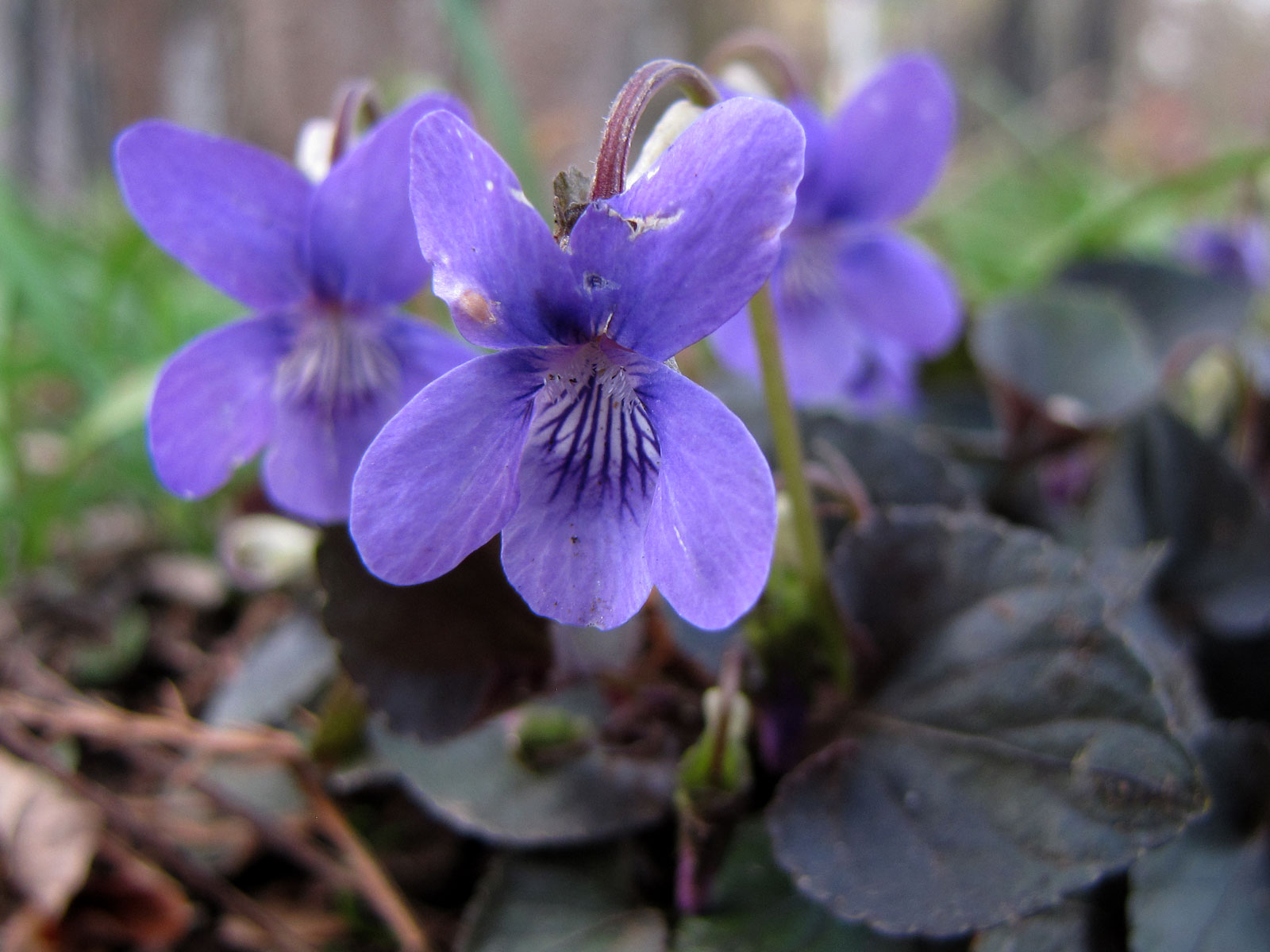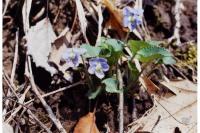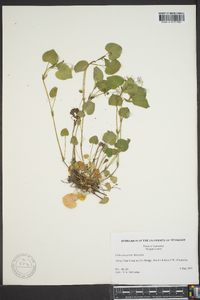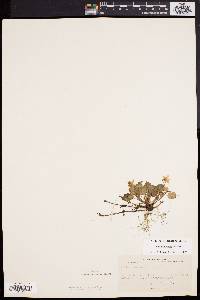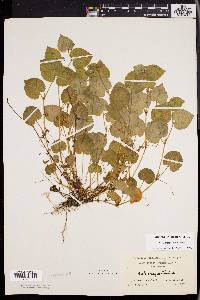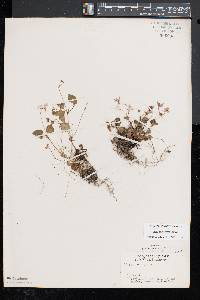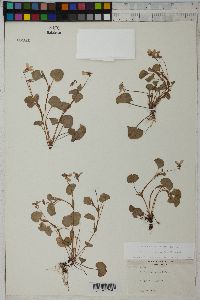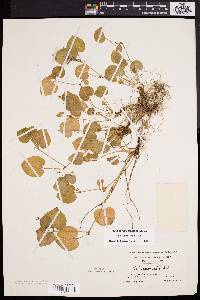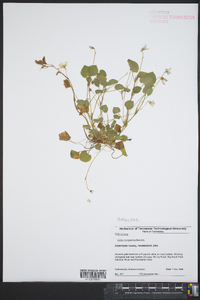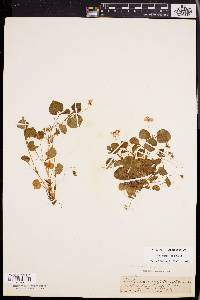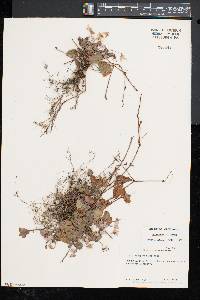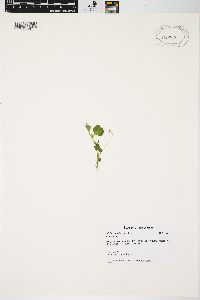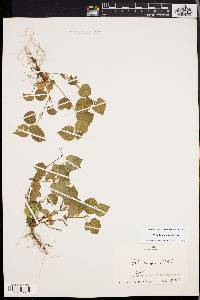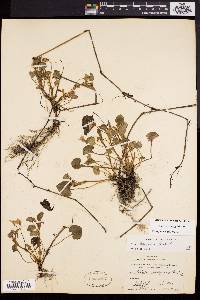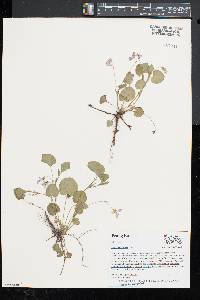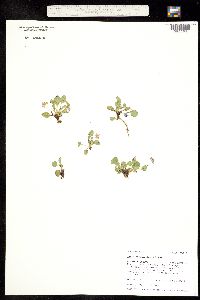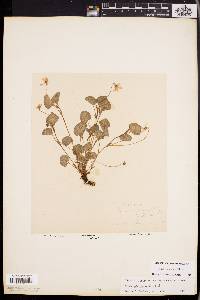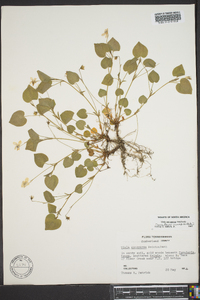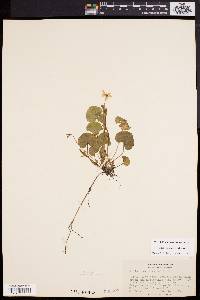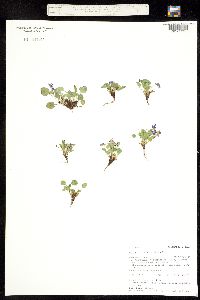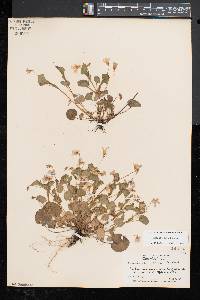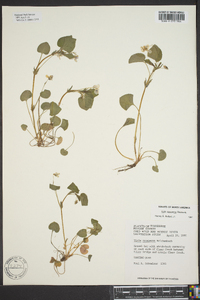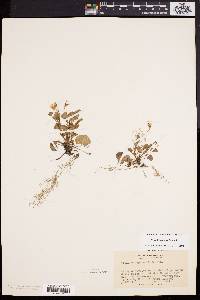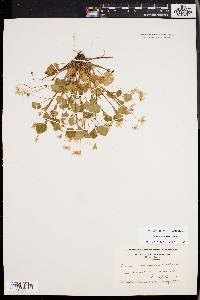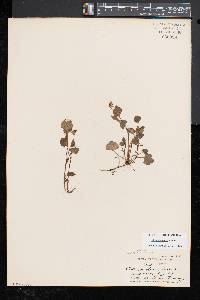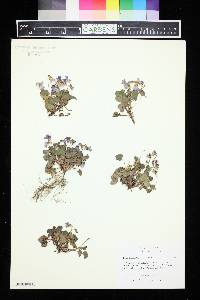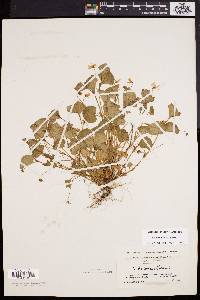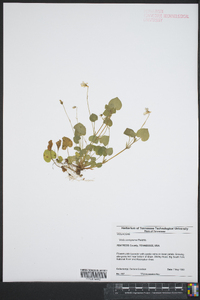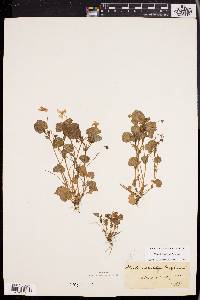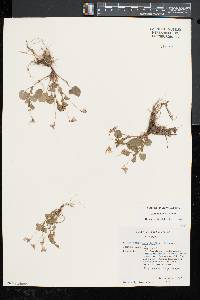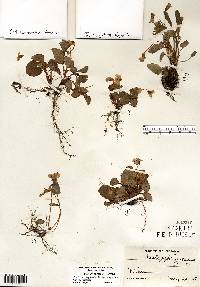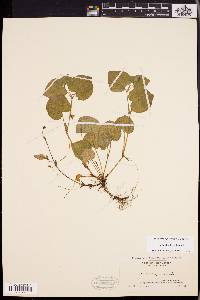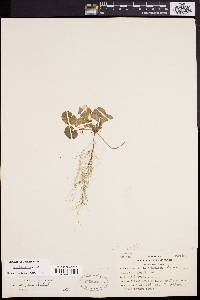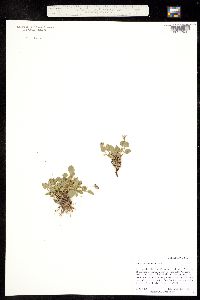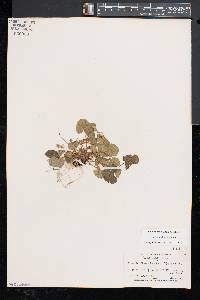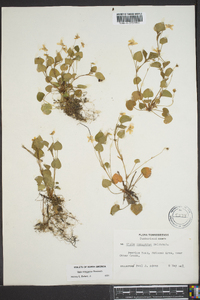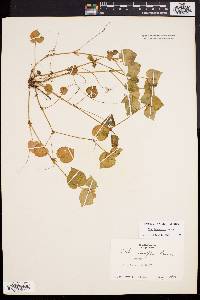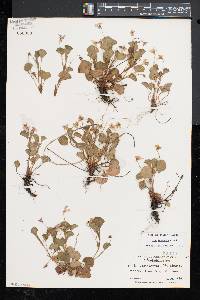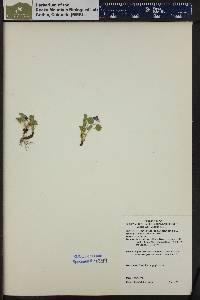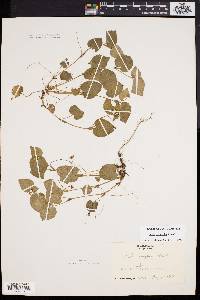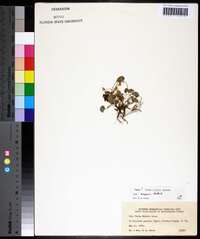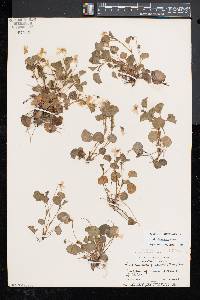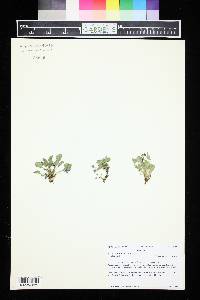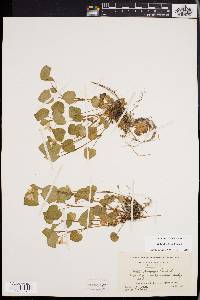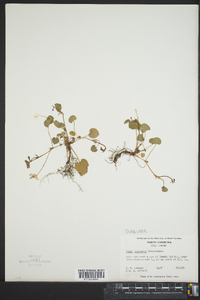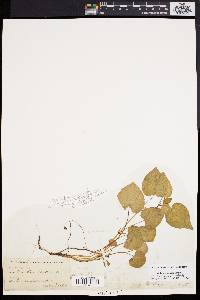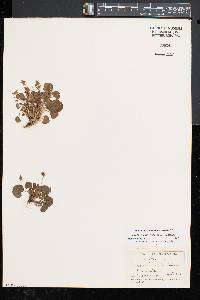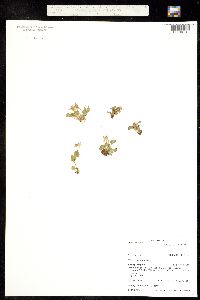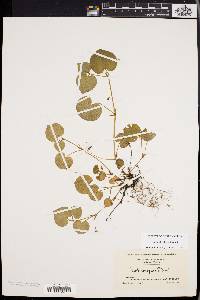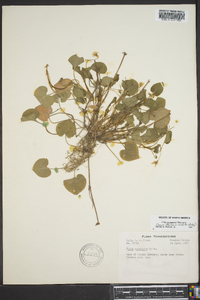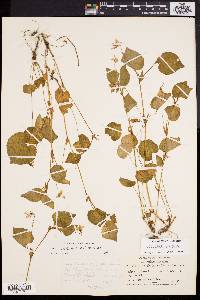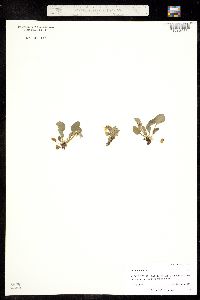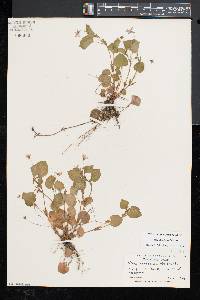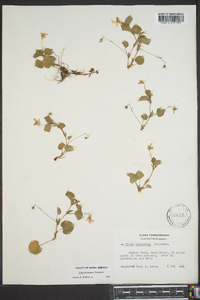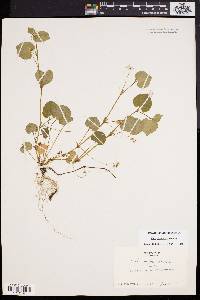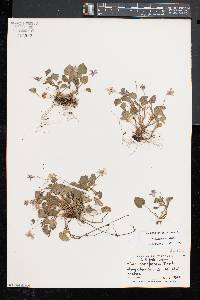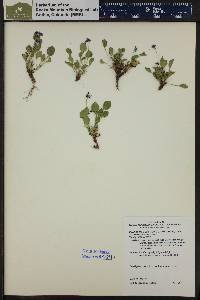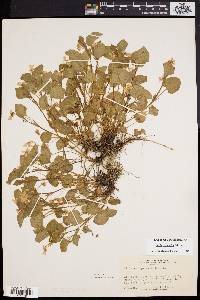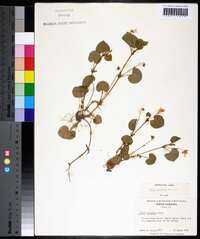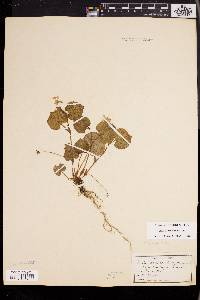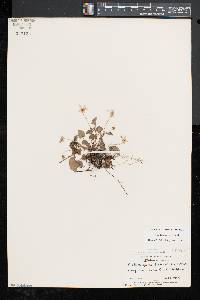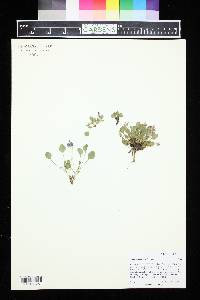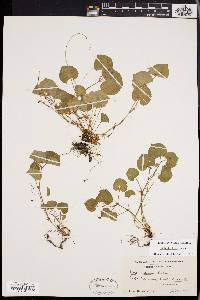Viola labradorica
|
|
|
|
Family: Violaceae
Alpine Violet, more...Labrador violet, American dog violet
[Viola adunca var. minor (Hook.) Fernald, moreViola conspersa Rchb., Viola muhlenbergiana Ging., Viola muhlenbergiana var. minor Hook.] |
Perennial herb 1 - 20 cm tall Leaves: both basal and alternate, long-stalked, pale yellowish green, thin and membranous, mostly hairless, 1.5 - 3 cm long, 1 - 5 cm wide, with low, flattened, round teeth. The basal leaves are kidney-shaped to rounded with a wide cleft base and rounded tip, but the stem leaves are more egg-shaped to wide heart-shaped with either an abruptly pointed tip or broadly tapered blunt tip. Stipules green, about 1 cm long, lance-shaped to oblong, gradually narrowed to pointed tip, and sparingly long-toothed (2 mm long and narrowly triangular. Flowers: in upper leaf axils, long-stalked (extending beyond leaves), solid light blue, under 1 cm long, bilaterally symmetric with two upper petals, two lateral petals, and lower petal with base modified into a relatively long nectar spur. The flowers appear very early in development, often when the plant is only a few centimeters tall, but in the summer, producing very fertile flowers that do not open (cleistogamous). Sepals: five, green, narrowly lance-shaped with ear-like appendages (auricles) at the base. Petals: five, separate, all differently shaped, light blue with darker veins. The two lateral petals have a beard of hairs near the base, and the lowest petal is prolonged at its base into a 5 - 8 mm long spur. Stamens: five, separate, but very tightly arranged so anthers touch as they surround ovary. The filaments are very short, and the lower two stamens have spur-like nectaries on their backs that extend into the spur of the lower petal. Pistil: with a single-chambered, superior ovary; and a single slender, slightly hairy style that bends downwards near the cylindric stigma. Fruit: a many-seeded, 4 - 5 mm long, ellipsoid capsule that opens lengthwise from top. The seeds are light brown and have a large amount of oily endosperm, and often an appendage (aril). Stems: clustered (arising from a rhizome), shortly erect though reclining later in season, mostly hairless, producing both leaves and flowers. Similar species: Viola labradorica is most easily confused with V. rostrata, but that species has flowers with distinct darker center spots and beardless lateral petals, more elongate leaves with a gradually pointed tip, and leaf edges with scattered pointed teeth. Viola rostrata also tends to flower a bit later than V. labradorica. Also very similar is V. adunca, but that species has dark blue flowers, and darker blue-green, more triangle-shaped leaves with a dense covering of minute hairs. The hybrid of V. labradorica and V. striata is V. x eclipes, which can be distinguished by its more egg-shaped leaves, wider stipules with more fringed edges, sepals with some bristles or fringe along the edges, and very pale blue flowers with white centers and a more flattened face due to the widely spreading petals. Flowering: April to June Habitat and ecology: Not common, primarily localized to moist woods and morainal swamps, but also along sandy floodplains, less commonly in drier woods or even open sandy prairies. Occurence in the Chicago region: native Notes: This species is part of a complex group including Viola conspersaand V. adunca. Our Chicago Region plants have variously been categorized under these names in the past. In some treatments, V. labradorica was treated as a northern, smaller counterpart of V. conspersa, and other times that taxon was called V. adunca var. minor. Studies by Ballard (1992) show that V. adunca is separate from the V. conspersa and V. labradorica complex, but separating the latter two species from each other is only possible at the extreme north and south ends of the range. Through the majority of the range for these plants, only one variable species is recognizable, V. labradorica. This species can hybridize with V. adunca, but more commonly hybrids are seen with V. rostrata and V. striata. Etymology: Viola is the classical name for the genus. Labradorica means "of (or from) Labrador". Author: The Field Museum Glabrous; stems beginning to fl when only 1-2 cm, becoming to 20 cm in summer, clustered on an oblique, occasionally branched rhizome; basal lvs thin, pale green, glabrous or nearly so, reniform to orbicular, rounded or blunt, with a rather open sinus, or cordate; stem-lvs round-cordate, obtuse, mostly (1-)1.5-4(-5) cm wide; stipules broadly lanceolate, fimbriate-toothed at least above; fls surpassing the lvs; sep narrowly lanceolate, entire; pet light blue- violet, with darker veins, the 2 lateral ones bearded; spur 4-5 mm; style slender, with bent tip; frs ellipsoid, 4-5 mm; seeds light brown; 2n=20. Woods and meadows; N.S. and Que. to Minn. and e. N.D., s. to Pa. and O., and in the mts. to S.C., Tenn., and Ala. May-July. Gleason, Henry A. & Cronquist, Arthur J. 1991. Manual of vascular plants of northeastern United States and adjacent Canada. lxxv + 910 pp. ©The New York Botanical Garden. All rights reserved. Used by permission. From Flora of Indiana (1940) by Charles C. Deam Rather frequent in the northeastern part of the state in wet or moist woodland. Rare or absent in the southern part of the state. …… Indiana Coefficient of Conservatism: C = 8 Wetland Indicator Status: FACW |
|
|
|

